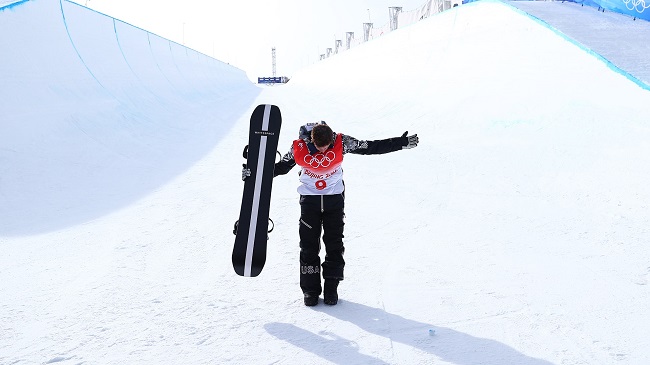The half-pipe competition for snowboarding has been a feature of the Winter Olympics since 1998.
Only two snowboarding events have appeared at every Olympic Games since 1998, and this is one of them.

Let’s start by covering some groundwork. The halfpipe resembles a pipe that has been sawed in half.
It is a U-shaped course with a snowy back. Riders do tricks as they move back and forth along the walls, which are 22 feet in height.
The halfpipe competition consists of a qualifying round and a final round. Each rider will have two attempts at qualifying in the qualifying round (30 men and 24 women).
The combined score from the two runs will determine the riders’ placement, with the top 12 moving on to the final round.
Each Competitor Gets Three Attempts in the Final Round
For the first time ever, the final round will give each rider three opportunities to go for it. In the past, racers could only take two laps at the end of the race.
Final round rider order is determined by qualification round results, with the riders with the lowest scores starting the round and the highest scores finishing it off.
And just like the preliminary round, the highest score is what ultimately counts. As with figure skating, here is where things get complicated due to their inherent subjectivity.
Each run is given a total score out of six by a panel of judges. Each run is given a single score by averaging the four remaining scores after dropping the highest and lowest.
How Do Judges Rate Performance on the Halfpipe?
Six judges will rate the snowboarder’s performance in the halfpipe out of a possible 100.
Athletes’ scores for a given run are calculated by removing the two lowest and two highest scores from the six possible and averaging the remaining four.
The judges’ point allocation is based on a variety of factors, including but not limited to During their runs, motorcyclists can achieve great amplitudes.
In terms of difficulty, this refers to the complexity of the tricks performed during the runs. Tricks from all across the board; variety. Continuously using the full pipe length. Executing a series of stunts in rapid succession.
Hirano may have appeared to have satisfied all of the requirements for a perfect score to the casual observer, but this was apparently not the case.
Hirano won silver at the 2018 Winter Olympics in PyeongChang when he made history by being the first snowboarder to successfully land consecutive double cork 1440s in the halfpipe.
Conclusion
Only three riders in the history of the snowboarding halfpipe have ever received a perfect score. A pair for Shaun White and a single for Chloe Kim.
White was the recipient of the coveted “perfect score” at two different competitions: the 2012 X Games and the 2018 Olympic Qualifications.
In his final snowboarding competition, in the Beijing Olympics, White placed fourth. Kim, who has just won two consecutive gold medals.
It made history in 2016 by becoming the first woman to land two consecutive 1080s and earn a perfect score of 100 at the U.S. Grand Prix.



